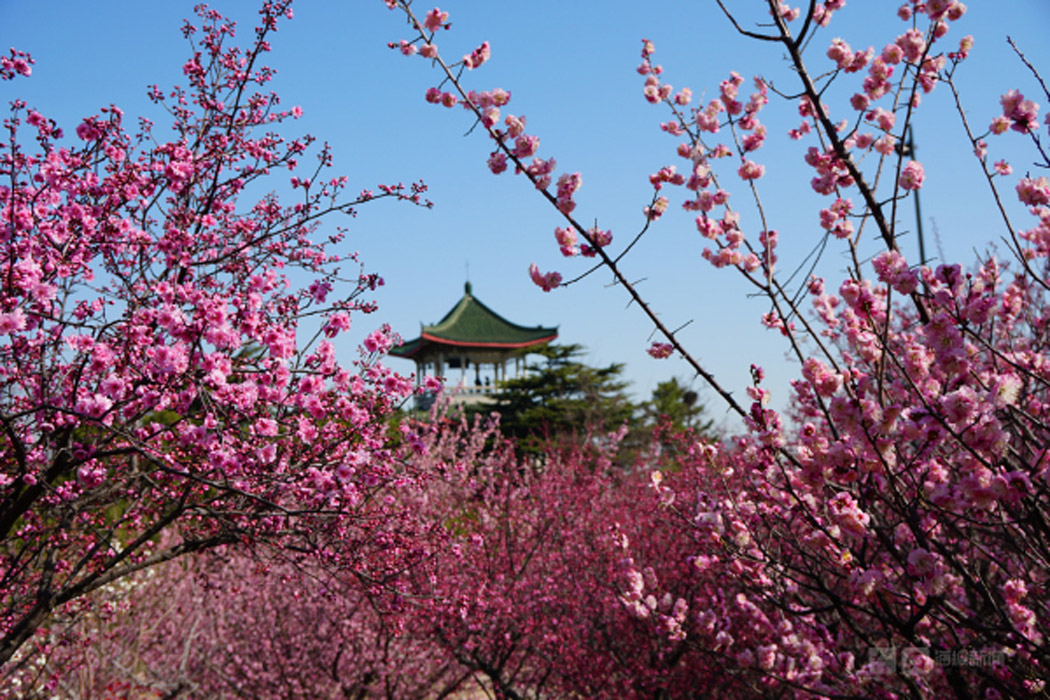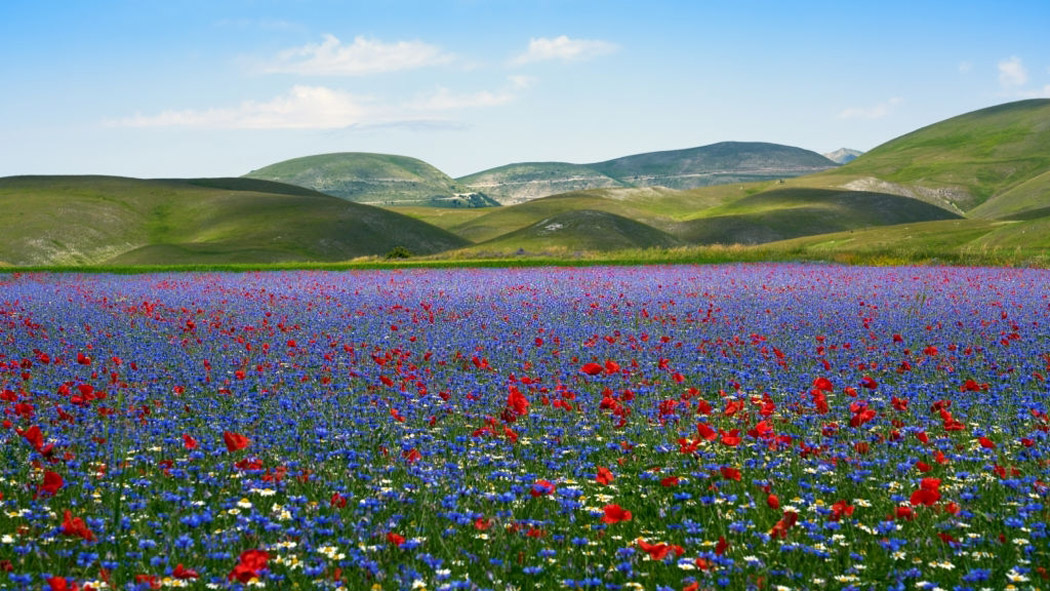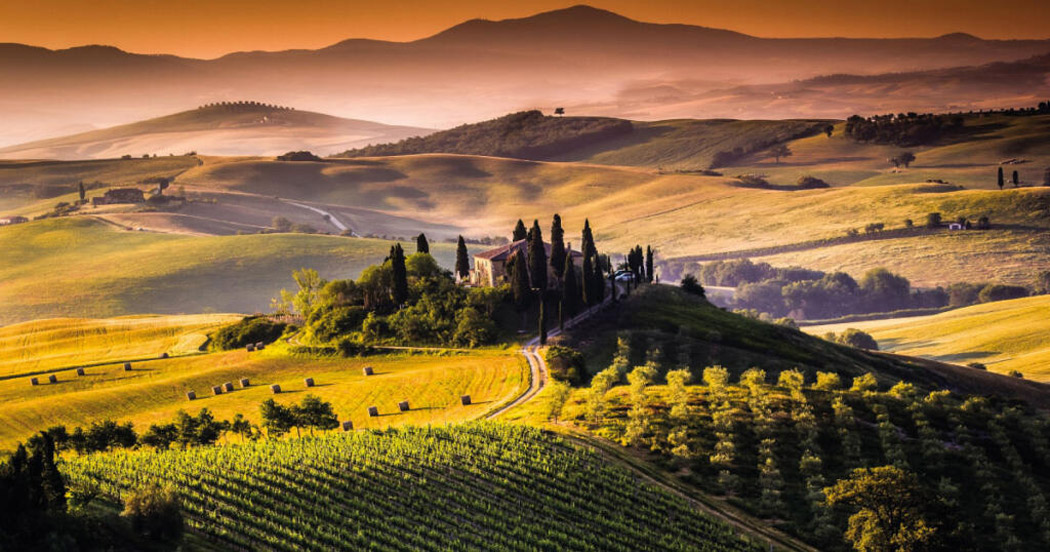When we think of China and the East, we always imagine a culture and a territory that are very different and far from us. But if we go into detail we can find surprises, for example I will tell you about the city of Yantai to find out how the Middle Country of China and Italy have many more points in common than we think.
Yantai is one of the most important cities on the Yellow Sea coast in Shandong in eastern China and has a very good quality of life. In addition to making a living from tourism, the city is an important economic center and it is here that China's largest wine production is found.

Nobody thinks of China as a wine producer, but over 3 million bottles are bottled here a year.
Yantai is not only a beautiful coastal city and the largest fishing port in Shandong but its location is strategic. From here you can reach the capital of China, Beijing, in a few hours by train, while Japan and Korea are a stone's throw away.
This city is not just crystal clear sea and sunny beaches, but also art and architecture. A mix of modern and ancient architecture can be found, such as the Penglai Pavilion, one of the Four Great Towers of China. It is said that the millenary tower was the starting point of the Eight Immortals who are part of Taoism and for this reason it is present in many representations.
Yantai also thrives on sacredness thanks to the sacred mountain of Mount Kunyu. It is said that it is the birthplace of Taoism and where there are quarries and statues belonging to the Eight Immortals.
Art of Embroidery and Paper-cutting
In Yantai, the tradition of wool embroidery on linen goes back thousands of years. In 2016, Yantai wool embroidery was included in the province's intangible heritage list. Even in Italy, embroidery is part of immaterial culture and is present in various areas with the oldest Italian embroidery school in Palermo and perhaps the most famous in Venice on the island of Burano. Close to where we live, is the famous Florentine school and the tradition of Palestrina that gave the name to the famous needle point by the same name.

Another element of the intangible cultural heritage is the art of carved paper. This is also very old in China and is still widespread. Paper scraps are traditionally used to decorate windows, beds, rice bowls, and flour tubs, and are an omen of good luck for homeowners.
Yantai's art of carving is well known and is called Jiaodong (the peninsula where Yantai is located), due to its attention to the telling of stories, myths and legends.
In Italy there is also a culture of paper and books. In addition to the Amalfi Paper, near Naples, where you can also visit a museum entirely dedicated to paper, there are many schools of restoration of ancient books. One of the most important is located in the Abbey of San Nilo in Grottaferrata where one of Leonardo di Vinci's Codes has been restored. Paper and books are so important that they have been celebrated with a party for over 400 years.
All these artistic and craft traditions are celebrated in Yantai every year during the "China (Yantai) Folk Arts and Crafts Expo".

The flowers and Yantai
Flowers and the harmony of nature play an important role in oriental culture and the cycle of the seasons is celebrated in many national holidays.
In the spring season, the city of Yantai is all in bloom. The white pear blossoms in early April are an attraction in the village of Xiaojiagou, a few kilometers from Yantai, creating a wonderful 'white sea'. After the pear blossoms come the cherry blossoms that color a stretch of Yangma Island, near Yantai, creating an enchanting scenery.
But inside the city in spring, everyone enjoys fields and fields of tulips, making the season even more magical.

If I think of my country, even in Italy there are many enchanting cities that are known for their use of flowers. For example, Sanremo is called the City of Flowers and is located on the Riviera dei Fiori in Liguria. In Umbria all the photographers flock to the flowering of lentils in Castelluccio di Norcia that transform the pasture lands into a palette of beautiful bright colors.

But the flowers are also used for traditional festivals starting from 1600 when the Popes began to celebrate religious holidays by covering the streets of the villages with carpets of flower petals. A shocking spectacle is that of the infiorata of Genzano, a town belonging to the Castelli Romani area.
The beauty of this floral carpet is known all over the globe and every year a 250-meter uphill road becomes the longest floral carpet in the world. Those who have seen it do not forget it.

Wine production in Yantai and Shandong
Back to Yantai, China and wine. Few people know that China with 13.7 million tons was the 1st producer of grapes in the world, with the largest production in the Shandong province where there is Yantai, thanks to its superior geographical position, and climate, its wine however has been mainly used for domestic consumption.

In addition to grapes, Yantai has earned an excellent reputation for its wine production and there are around 60 Chateaux here. Over the past 30 years, large companies have established their wine production in this area which sees major producers such as Changyu, Great Wall, Junding and Grand Dragon as protagonists.

The Changyu group is the oldest Chinese producer of wine and brandy in China and is also the largest wine cellar in Asia ranked first among the 10 best-selling wine brands in the world in 2020 (especially in China).
The old Changyu winery headquarters in the center of Yantai has now been converted into the Wine Culture Museum and is open for visits. These cellars were located less than 100 meters from the coast and 1 meter below sea level, which functioned as a natural air conditioning system for over a century.
To support its wine production, Yantai has developed a vibrant secondary industry. The city currently has more than 10 cork producers, including Xiangfeng Industry Trade Co the largest in China. Yantai caps account for about 70% of the national market share.
In the world, Italy is the first nation for the production of wine. Many of the production areas have been inscribed on the UNESCO World Heritage List, such as the Langhe in Piedmont with the famous Barolo, the Prosecco Hills in Veneto and the landscapes of Valdorcia in Tuscany with the famous Brunello di Montalcino.
The cultivation technique of the Pantelleria sapling vine where the excellent Passito is produced from the Zibibbo vine is also included in the UNESCO World Heritage Site. The vines grow in vineyards that have a particular style, they lay on the ground giving life to something that looks a lot like low bushes, a unique landscape built over centuries of history.

China and Italy also share fairs and festivals where the wine industry is celebrated but also local traditions.
Since 2007, its international wine fair has been held in Yantai, which enjoys widespread popularity in China, while in Italy, every year Vinitaly in Verona, involves producers, sommeliers and wine lovers from all over the world. An edition of the fair was brought to China and precisely to Chengdu in Sichuan.
But perhaps thinking of Italy and wine, the wonderful village festivals that celebrate excellent local productions come to mind. It can be said that the most spectacular of these festivals takes place in Marino, in the Castelli Romani, where during the Grape Festival, wine instead of water comes out of the town's fountains.
At the end of this short story, China and Italy no longer appear so distant and different and each hides treasures and traditions that deserve to be known and lived. Through the territory and the culture we can create cultural exchanges that would enrich our countries and that would help people to get to know each other by making people happy.








Follow us